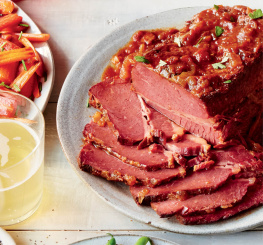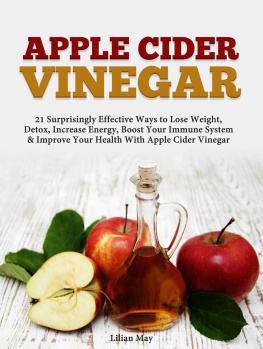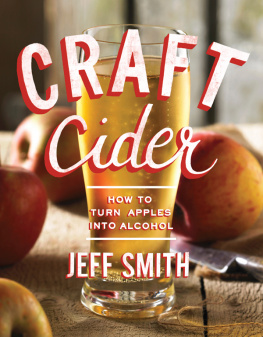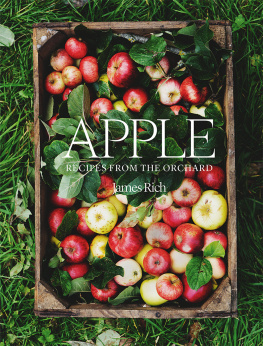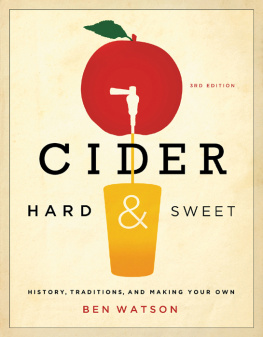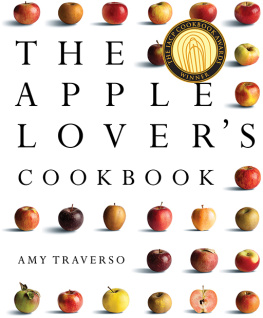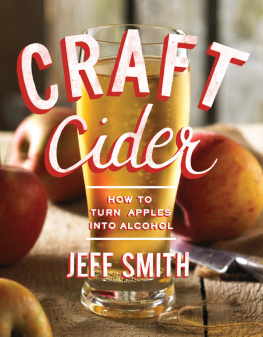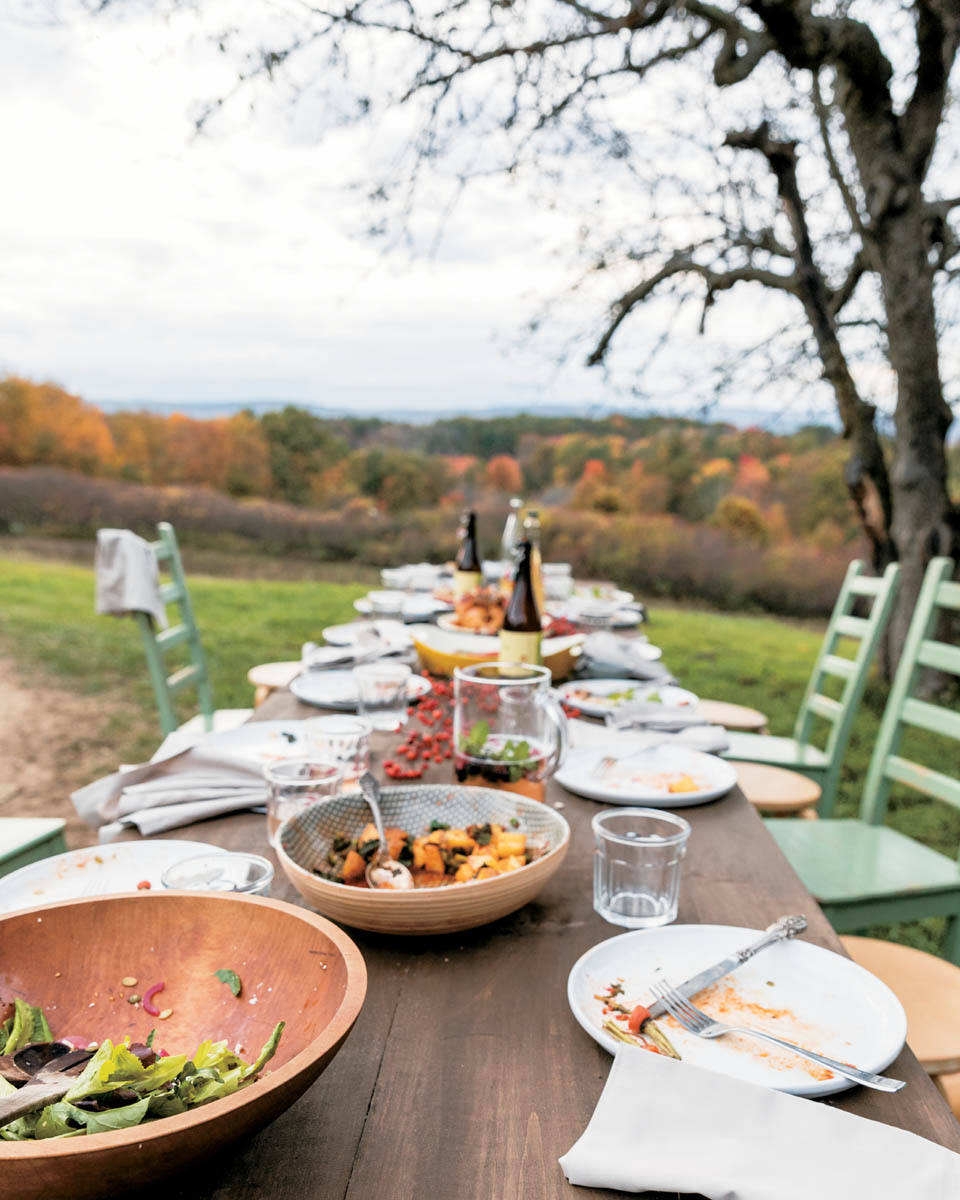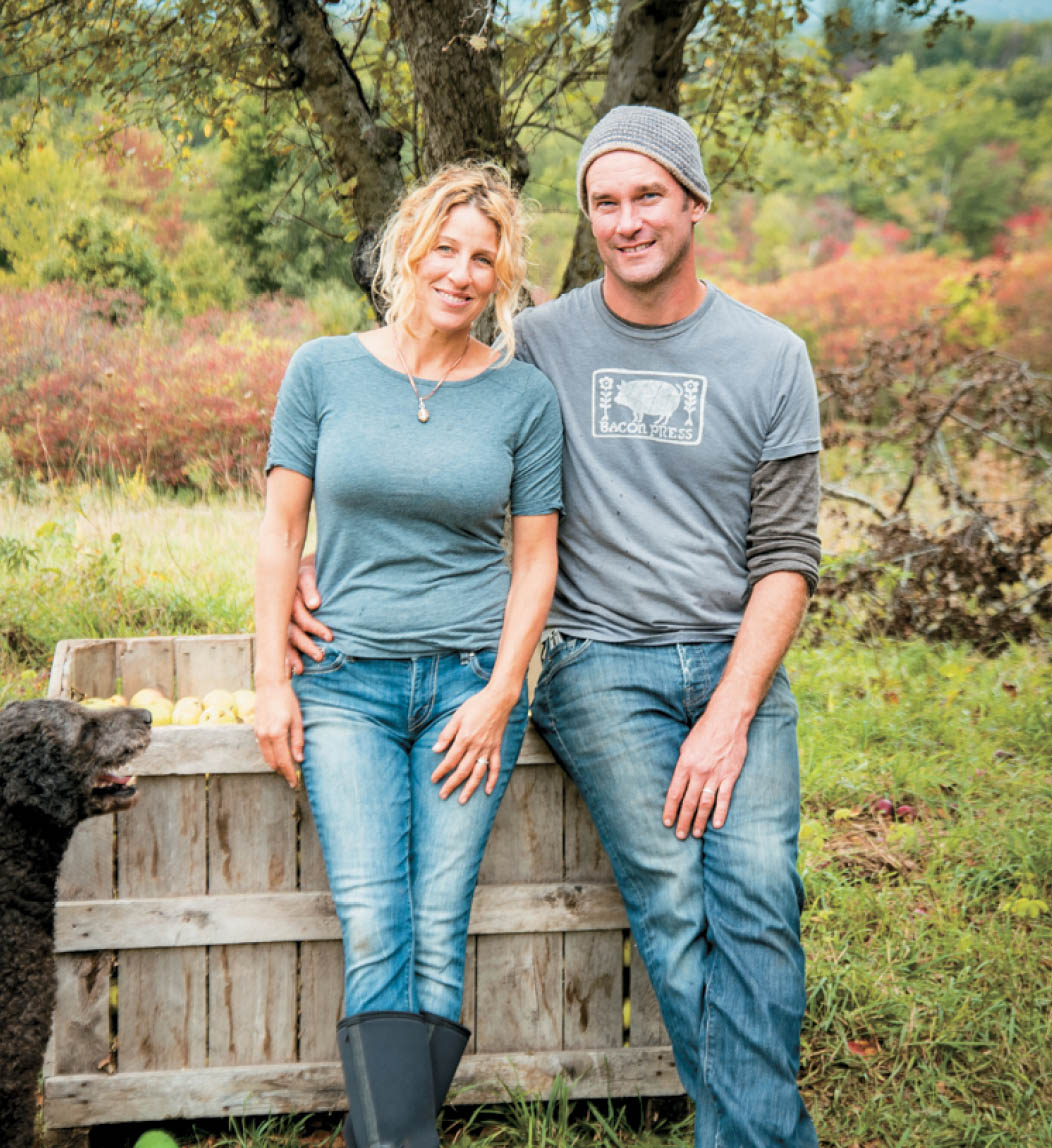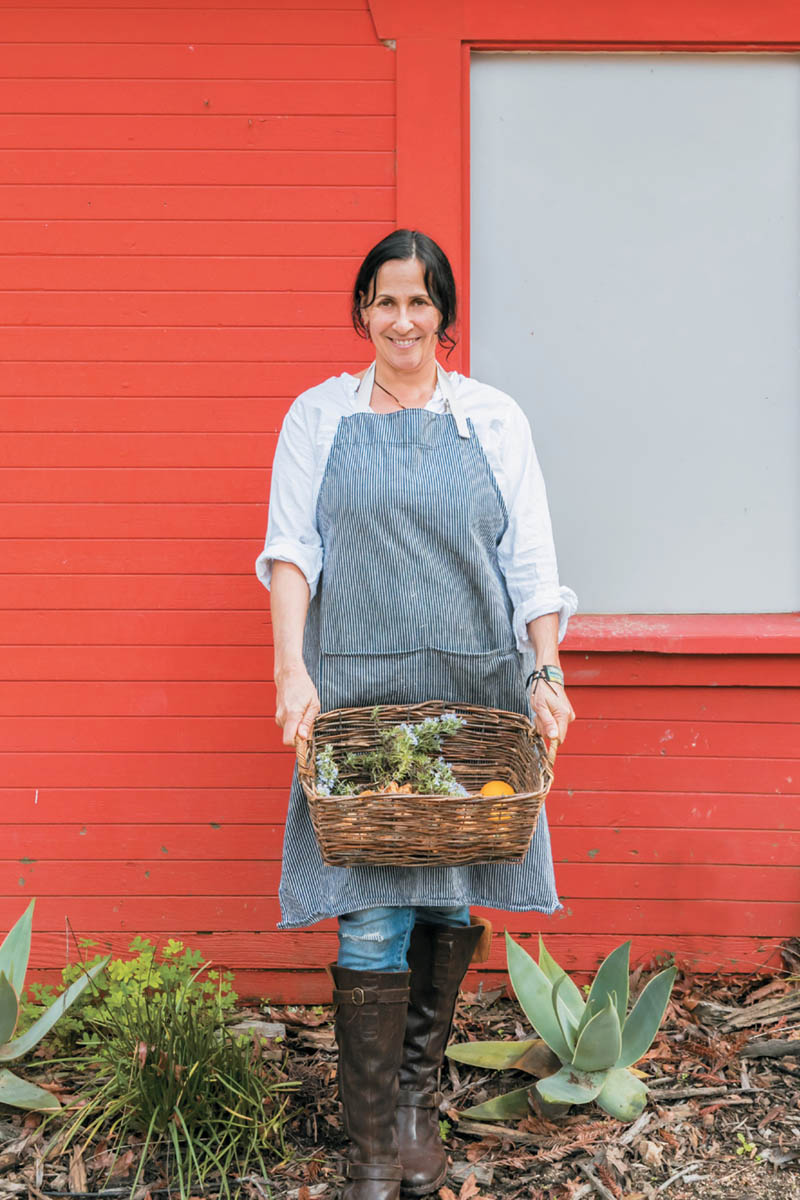Title Page
to our beautiful children
Ava, Harry, and Lucienne
Contents
Welcome to the Ciderhouse!
E very year, in the late autumn, we find ourselves surrounded by stacks of apple bins and the clanking, thumping sounds of our old Mount Gilead cider press. Pulp sprays out of the grinder overhead, and the whole barn is filled with nanoparticles of appley-ness. We get coated from head to toe. The constant rhythm of the hydraulic pump shakes the floor as we build the stacks of ground apples that will be squeezed at 1,000 pounds of pressure per square inch. Golden cider slowly fills the tanks lined up outside the barn. Were always exhausted at the end of the day, and even more so at the end of press season, but the fruits of our labor will be savored for the entire year ahead. This cider is the heart of our orchard cycle and the basis of this cookbook.
For the past dozen years, we have been growing, pressing, fermenting, and cooking with apple cider. We set out on our orcharding venture to become estate producers of authentic traditional hard cider, which is slowly wild-fermented over the long cold winter to yield a depth of flavor that only good fruit and time can create together. We are still striving to reinhabit the old orcharding ways through intensive place knowledge, by learning the cider varieties best suited to our locale and production methods and by understanding how to grow those apples with the least impact on the environment. Raising apples for cider is not the same endeavor as growing apples for table fruit: we are unconcerned with cosmetic appearance and are instead obsessed with juice qualities. Our ecological principles have been challenging to implement and we have had to accept reduced yields as a consequence of our management strategy, but we are committed to the long-term approach of do no harm.
Showing what can be made from cider, in all its varied forms, has been an important part of our lives as growers and producers. Farmers markets have provided us with a loyal base of chefs, home cooks, and cider enthusiasts with whom to share our cider products. A few years back, we expanded the scope of our market stall by introducing a small line of old-time pantry products (cider syrup, vinegar, and shrubs). With the food worlds recent growing love of all things apple cider vinegar, we wanted to bring one to the table that was full-bodied and delicious, strong, and fun to use.
Since apples are integral to traditional New England food culture, we didnt have to look far to rediscover the many uses for the apple and its juice in the cookery traditions of our region. We found that cooking with cider syrup and apple cider vinegar added depth and complexity, and we eagerly listened to our customers rave about all the creative and delicious ways they used these products. We shared our recipes and cooking techniques with our customers and they shared theirs! We cook daily for our family and friends, and they cook for us. Food is central in our community and eating meals together is a manifestation of our connections. We share these recipes in that same spirit.
Jonathan and Nicole
P eople always ask me how I learned to cook. I simply tell them: by eating. My passion for food and drink led me to kitchens and farms around the world, where I absorbed the place knowledge and food traditions of different cultures. Cooking to me is the art of everyday life. It is what connects us to the rhythm of the seasons, to the people who grow our food, and to the families, friends, and communities with whom we share our meals. In my role as the culinary artist in residence at the Montalvo Arts Center in California, I use the spoils of the ciderhouse to craft unique menus that bring together working artists to share food and ideas. The versatile apple is an apt culinary star, enlivening taste buds and connecting us to the terroir and a sense of place.
The rich possibilities of the apple were one of the first revelations in my culinary youth. I clearly remember tasting dry, crisp cider on my first trip abroad to Normandy, France, in my early twenties. While traveling the classic Cider Route that runs through the countryside of Normandy, I drank cider from beautiful ceramic cups and enjoyed it paired with buckwheat crpes. It was during that first trip to France that I also discovered the delicious, secret love between apples and cheese; the seductive flavors of a glass of calvados; and the pride people took in their pommeau. Cider products became a regular part of my place-based cooking.
When my sister Nicole and her husband Jonathan bought an orchard years ago, I was excited about the culinary adventure they were embarking on. I have been inspired and schooled by them as they have explored the world of apples, rediscovering lesser-known varieties and largely forgotten ingredients and products. My love of cider has grown even more as I have embraced their ciderhouse products as essential ingredients in my cooking.
Bringing a good bottle of cider to the table is always a treat, but introducing the unique flavors of other ciderhouse products is still a real surprise for many. I created recipes for this book to celebrate those many wonderful flavors. May they inspire many shared meals with the people you love.
Andrea
The Versatile Apple: A Foundation of Cuisine
A pple trees are very generous with their gifts, not only of their wildly varied fruits, but through all the seasons: They give us fragrant, pink-tipped blossoms and showers of petals in the spring, followed by boughs laden with promise and anticipation, the melancholy aromas of fallen fruit in the fall, and distinctive gnarled silhouettes and perfumed firewood in the coldest part of the year. Add to that their tenacious ability to thrive nearly anywhere, independent of human desires and cultivation, and you might see why we love them beyond measure. But apart from this sensuous yearly cycle of growth, decay, and renewal, the cider pressed from apples has a unique and satisfying trajectory of its own. We make it into different products hard cider, vinegar, and syrup to name only a few that delight our palates and provide complexity to a wide variety of dishes.
Cider is the foundation of this cookbook and the inspiration for our cooking. Take a quick look at the natural evolution of cider, and you may understand why. Left to its own devices, unpasteurized, fresh-from-the-press sweet cider is slowly transformed by wild yeasts into hard cider. It has a faint fizz at first, then a workmanlike steady foaming, with the rounded sweetness yielding to dry, alcoholic cider over the passing months. This next stage may be arrested with skilled intervention, but allowed to do as it would, the hard cider will slowly transform again, through the work of native vinegar bacteria, into tangy cider vinegar. In this uninhibited way, cider exists not as a stable product but as a continuum, a liquid ecosystem with seasons and opinions of its own, and as the inspiration for the fertile grounds of creativity in the kitchen.

